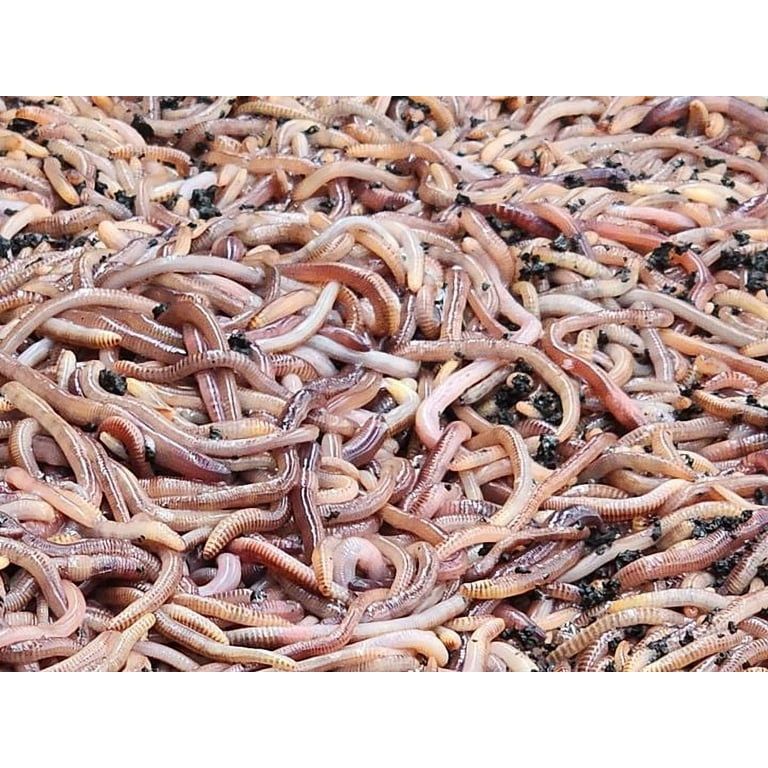Efficient red worms: Improve soil quality
Efficient red worms: Improve soil quality
Blog Article
Every Little Thing You Need to Know Regarding Red Wigglers for Composting
Red wigglers, or Eisenia fetida, play a pivotal duty in the world of composting, transforming natural waste right into useful soil modifications. The procedure of setting up a worm container and preserving it can position challenges.
What Are Red Wigglers?

(red wiggler worms for sale near me)
Native to North America, red wigglers are surface-dwelling microorganisms that favor wet, cozy habitats rich in decomposing natural issue. Their diet regimen consists mainly of decaying plant material, food scraps, and various other natural debris, which they consume and break down successfully. As they absorb this product, they create nutrient-rich castings that improve dirt fertility.
Red wigglers are hermaphroditic, possessing both male and female reproductive body organs, and can reproduce swiftly under optimal conditions. Generally, red wigglers are vital contributors to the procedure of reusing organic waste into useful compost.
Benefits of Using Red Wigglers
Utilizing red wigglers in composting systems uses countless advantages that improve both the performance of waste management and the quality of the resulting compost. These worms, medically called Eisenia fetida, are particularly efficient at damaging down raw material, transforming kitchen area scraps and backyard waste right into nutrient-rich garden compost at an accelerated rate.
One of the main advantages of making use of red wigglers is their capacity to eat large quantities of organic material, commonly refining their weight in food waste daily. This high intake price brings about much faster decomposition and reduces the volume of waste sent to landfills. Furthermore, the castings produced by red wigglers are rich in important nutrients, useful bacteria, and enzymes, making them an exceptional plant food for yards and plants.
Furthermore, red wigglers flourish in a variety of environments, making them versatile for both interior and outside composting systems - red wigglers. Their existence in a compost bin aids to freshen the product, preventing odors and advertising a healthy composting procedure. Overall, using red wigglers not just adds to efficient waste management yet likewise supports lasting horticulture methods via the manufacturing of top notch compost
(Raleigh Worm Farms)
Establishing Your Worm Bin
To effectively establish a worm container, it is important to choose a suitable container that satisfies the requirements of red wigglers while giving a conducive environment for composting. A suitable bin can be made from plastic, wood, or metal, with a capability of a minimum of 1 square foot for every single extra pound of worms.
Make certain the container has adequate drainage holes to avoid excess wetness, as red wigglers flourish in a moist, however not waterlogged, atmosphere. red wigglers. The bin ought to additionally be aerated to give enough air movement, protecting against anaerobic problems that can damage the worms
A suitable place for the worm bin is an amazing, dark area, devoid of direct sunlight and extreme temperature levels, as red wigglers favor a temperature level variety of 55 to 77 degrees Fahrenheit.
Prior to introducing the worms, prepare bed linens products such as shredded paper, cardboard, or coconut coir, which will provide both environment and food. Dampen the bed linen lightly to create an inviting atmosphere for the worms. Think about placing a cover on the container to maintain moisture and minimize insects, while guaranteeing it can be quickly removed for upkeep.
Feeding and Care Standards
Feeding red wigglers is a critical aspect of keeping a healthy and balanced composting system. These worms grow on a diverse diet, largely composed of natural materials such as fruit and vegetable scraps, coffee premises, and crushed eggshells. It is crucial to prevent feeding them meat, milk, and oily foods, as these can produce undesirable odors and bring in bugs.
When introducing food to your worm bin, cut or shred materials right into smaller items to help with quicker disintegration. Start with percentages to assess the worms' consumption rate, slowly enhancing the amount as they adapt. It is a good idea to alternate feeding places within the container to encourage complete blending and aeration of the garden compost.

Troubleshooting Common Issues
Keeping a growing worm composting system can occasionally offer obstacles that need interest and troubleshooting. Common issues consist of an undesirable odor, which frequently indicates overfeeding or the visibility of anaerobic conditions. To correct this, minimize the quantity of food included and make certain appropriate aeration by blending the bed linens material.
Another constant issue is the escape of worms from the container. This can happen due to excessive dampness or inappropriate environmental problems. Frequently check the dampness degrees, going for a wet however not soggy uniformity, and maintain optimum temperatures in between 60-80 ° F(15-27 ° C )to produce a comfortable environment for your red wigglers.
Pests, such as fruit flies, can additionally get into worm containers. red wigglers. To fight this, cover food scraps with a layer of bedding or shredded paper to prevent flies from laying eggs. Additionally, make certain that any food added is fresh and free from mold and mildew, which can attract undesirable pests
Finally, if your worms seem inactive, look for tension variables such as temperature variations or inadequate wetness. Addressing these typical concerns review will assist keep a healthy and efficient worm composting system.
Conclusion
In summary, red wigglers, or Eisenia fetida, play an important function in sustainable waste administration with vermicomposting. Appropriate arrangement and upkeep of a worm bin, along with adherence to feeding guidelines, ensure a flourishing community that lessens garbage dump contributions.
Report this page